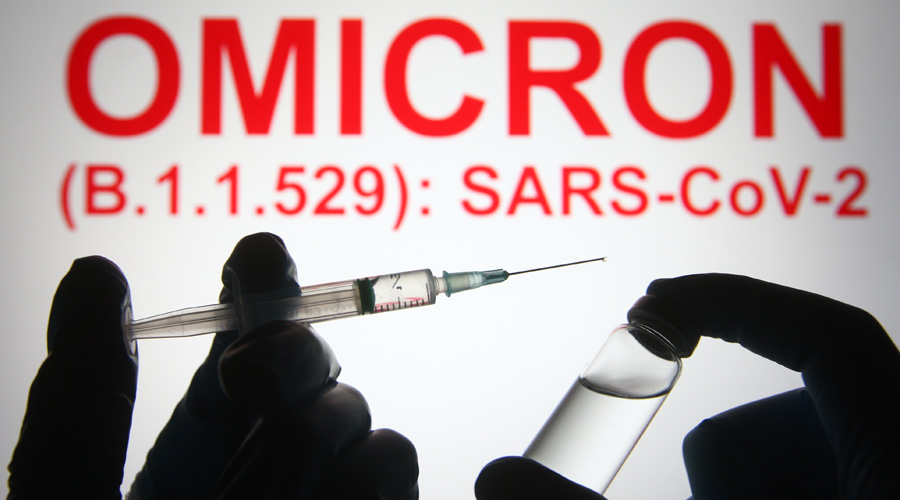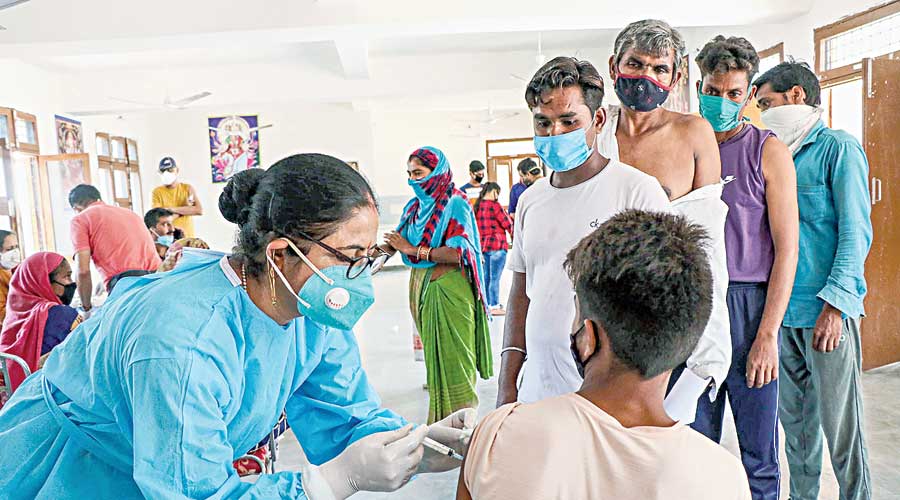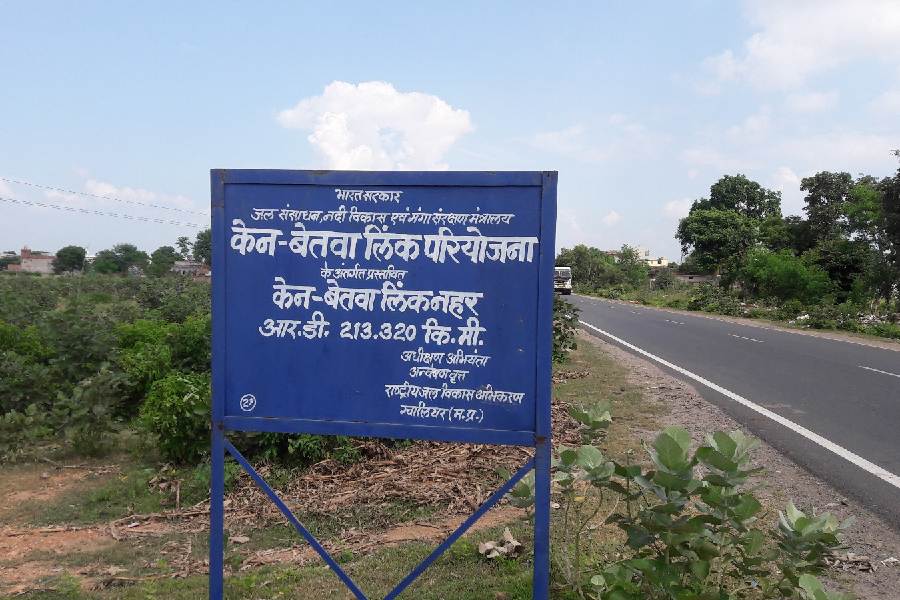India has detected 32 omicron patients and none appears linked to clusters of Covid-19 infections, health officials said on Friday, but some scientists are worried whether the current surveillance mechanisms are efficient enough to catch surge signals early.
The 32 patients have turned up in Maharashtra (17), Rajasthan (9), Gujarat (3), Karnataka (2) and Delhi (1), and all the patients have shown mild symptoms, health officials said.
They did not specify how many of the patients had a history of international travel or contact with travellers.
The Maharashtra patients include seven announced on Friday — three patients in Mumbai with a travel history from Tanzania, Britain and South Africa and four in Pimpri who are contacts of earlier omicron cases.
The Union health ministry has over the past two weeks directed the states to send for genome sequencing samples from all Covid-19 patients with an international travel history, and samples from clusters of infections anywhere in India and from re-infections and breakthrough infections.
“We are witnessing clusters in some states -- around 70 clusters are under observation,” said Vinod Paul, chair of the national task force on Covid-19 and member (health) of the Niti Aayog, the Centre’s apex think tank. “By and large, they are delta.”
The delta variant had fuelled the country’s second Covid-19 wave.
While India’s Covid-19 genome sequencing capacity has increased significantly over the past year, some health researchers are concerned that there isn’t enough visible coordination in the collection of samples for sequencing and in the deposition of samples.
Scientists involved in sequencing said they often do not know the source of the samples.
“We are largely sequencing blind -- we’re hoping someone, somewhere is coordinating, keeping track of where samples are coming from and looking out for unusual infection patterns or clusters,” said a senior biologist in one of the 28 labs tasked with sequencing.
The National Centre for Disease Control (NCDC), New Delhi, the country’s apex disease surveillance agency, is coordinating both the genome sequencing efforts and infection surveillance. But it relies on state-level disease units for surveillance and sampling.
“We are monitoring clusters and emerging clusters,” NCDC director Sujeet Singh told The Telegraph, adding that no cluster had so far been linked to omicron. But he declined to say how many sequences had been sampled from clusters since the ministry’s alert on omicron.
A senior scientist in another sequencing lab said that early identification of any connection between a fast-spreading variant and localised infection patterns or clusters was critical to curbing rapid spread.
“Delta was spotted as a potential cause of household clusters in Maharashtra by mid-February, but it wasn’t until six to eight weeks later that surveillance mechanisms recognised its role in the surge,” the scientist said.
A query from this newspaper to the health ministry seeking the number of samples sequenced from clusters and from re-infection and vaccine breakthrough cases has evoked no response.
India’s overall epidemic continues to shrink with the daily new infections staying below 10,000 over the past two weeks. But Bangalore, Chennai, Mumbai and Pune show a slow-growing epidemic, according to an analysis by scientists at the Institute of Mathematical Sciences, Chennai.
“It’s probably too early for an omicron-driven surge -- the number of omicron cases in the country could be small,” said Sitabhra Sinha, a biophysicist monitoring the epidemic over the past 21 months.
Mask use down
India’s current mask use has fallen to levels below those observed just before the start of the country’s second Covid-19 wave, Paul warned, calling for enhanced precautions to guard against fresh surges.
Mask use was 81 per cent in India in mid-May, and 59 per cent in mid-November, he said, citing estimates from the US-based Institute of Health Metrics and Evaluation.
“We’re operating at a low, unacceptable and risky level of mask use,” Paul said. He said IHME data had suggested a mask use of about 60 per cent in mid-February ahead of the second wave, which peaked in early May.
The IHME — a research centre on global health statistics at the University of Washington — uses data from behaviour-tracking surveys to estimate mask use across the world.
By mid-November, mask use had dropped to 45 per cent in Punjab and 51 per cent in Uttar Pradesh, but was 73 per cent in Maharashtra, according to IHME data.












